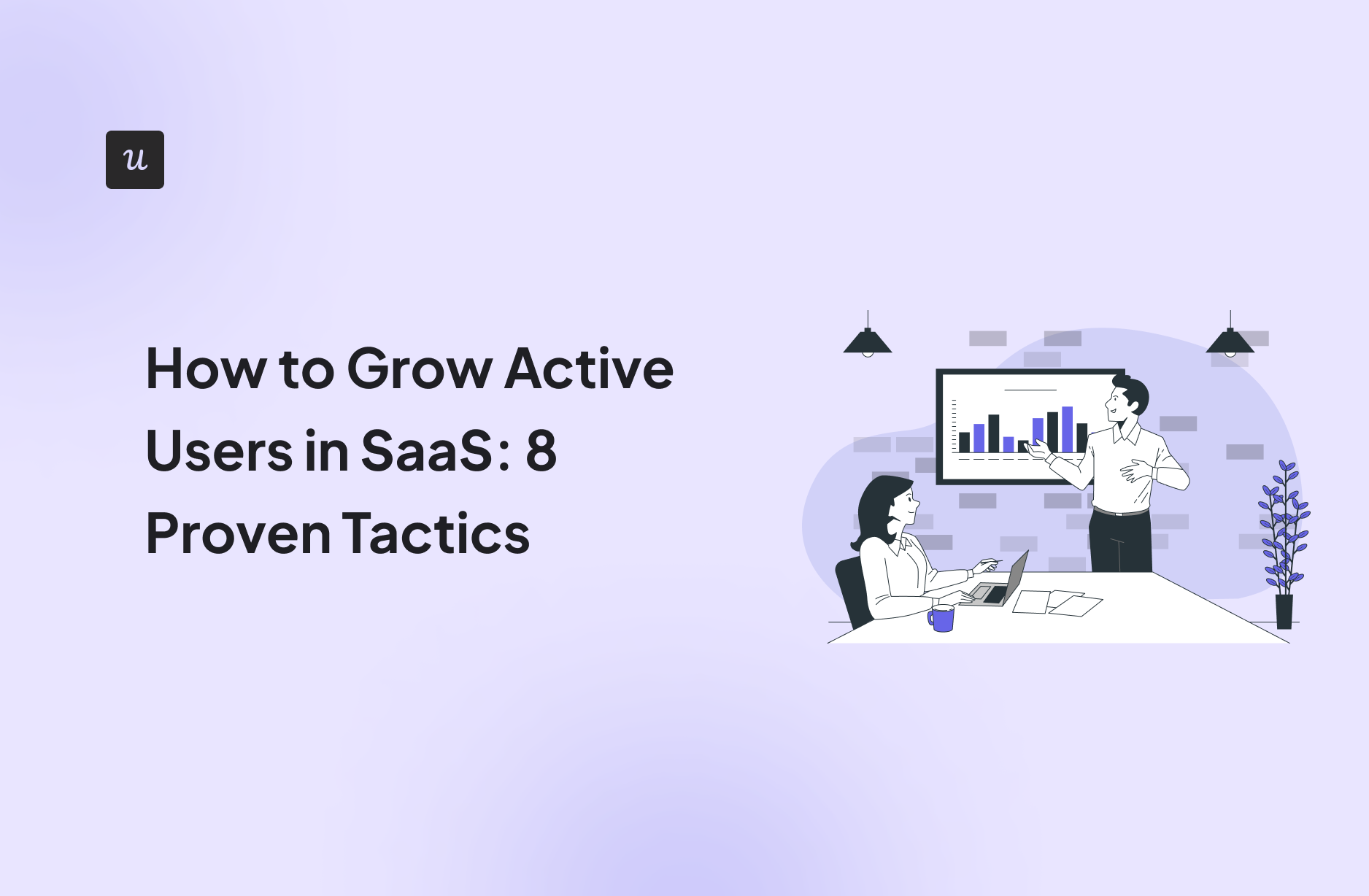
Looking for proven ways on how to grow active users in your SaaS business?
When it comes to making users engaged and increasing the number of daily engaged users, there are certain points you need to figure out first.
Good news! This article has your back.
Let’s dive in.
Get The Insights!
The fastest way to learn about Product Growth, Management & Trends.
What is an active user in SaaS?
In absolute terms, users who interact in some way with your platform during a specific period of time are considered active users.
More specifically, you can break the category of active users down into three main groups or time periods:
- Daily active users or DAU
- Weekly active users or WAU
- Monthly active users or MAU
It’s up to you to decide what a ‘specific period of time’ means for your business because the ideal active user doesn’t always have to be a daily user. It very much depends on whether your app is developed for frequent use, or once-in-a-month interaction is enough to bring off its purpose.
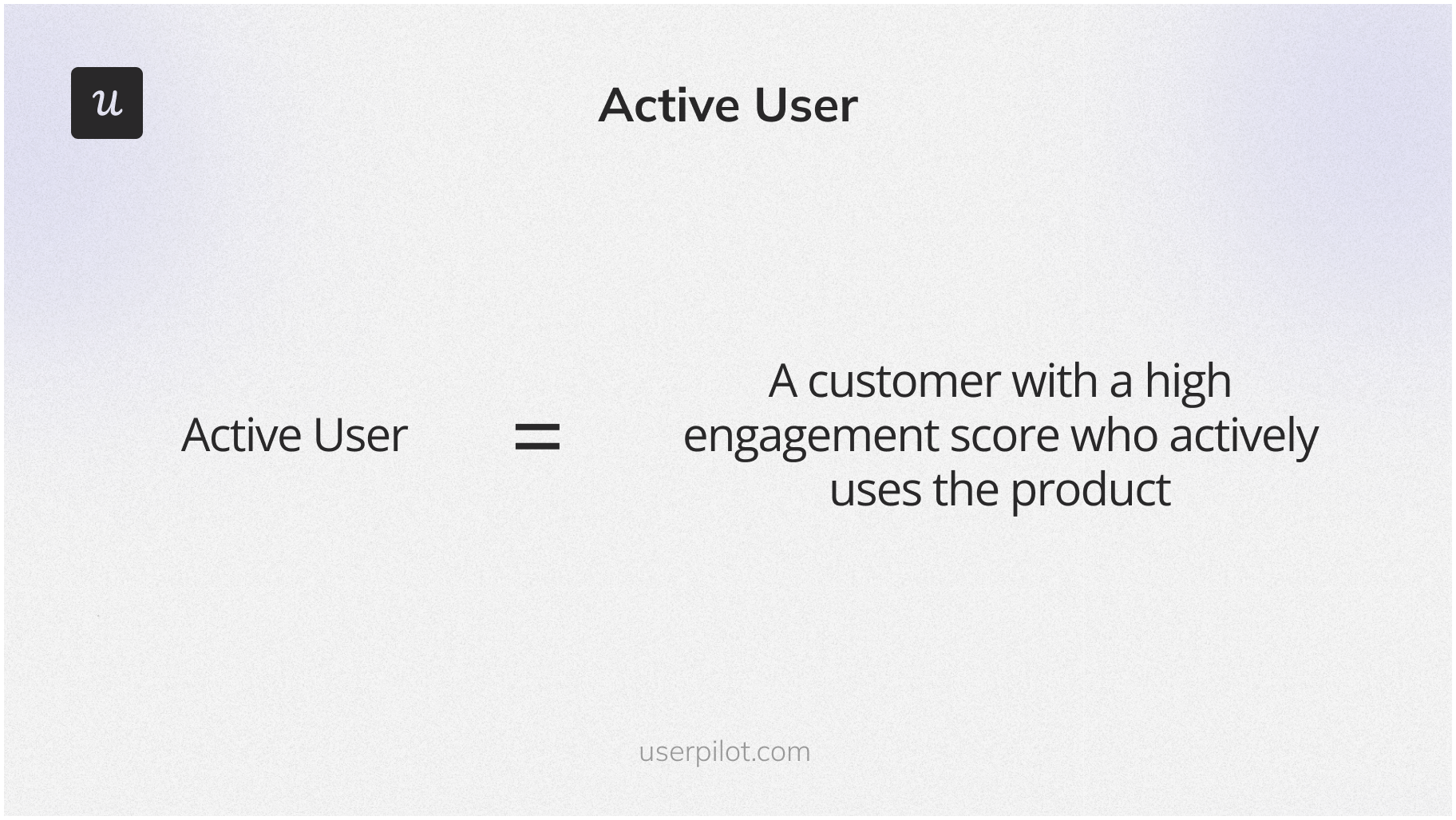
Why should you track active users?
Tracking active users helps you understand how your users benefit from your app.
Engagement does not always equate to success. Users of freemium applications are more likely to use them, there is no doubt. Ultimately, you want free users who eventually become paying clients.
If you have high user engagement but only a few of your active users convert into paid customers, you have a problem and you might need to rethink what’s included in the freemium plan.
Another reason to track the important actions of your active users is to ensure your platform works properly. There’s a big chance that the number of active users will fall if there’s a problem with your servers, for example.
How do you measure active users?
When you want to gain an understanding of the success of your application and find out if it provides enough value to keep users active, you should track daily active users with two important metrics.
These active users metrics are:
- User engagement: how many active users you have based on how they engage with your product features
- User retention: how many users you don’t churn
Engagement and retention differ from platform to platform, based on the app’s nature. The combination of user engagement and retention metrics tells how sticky your app is.
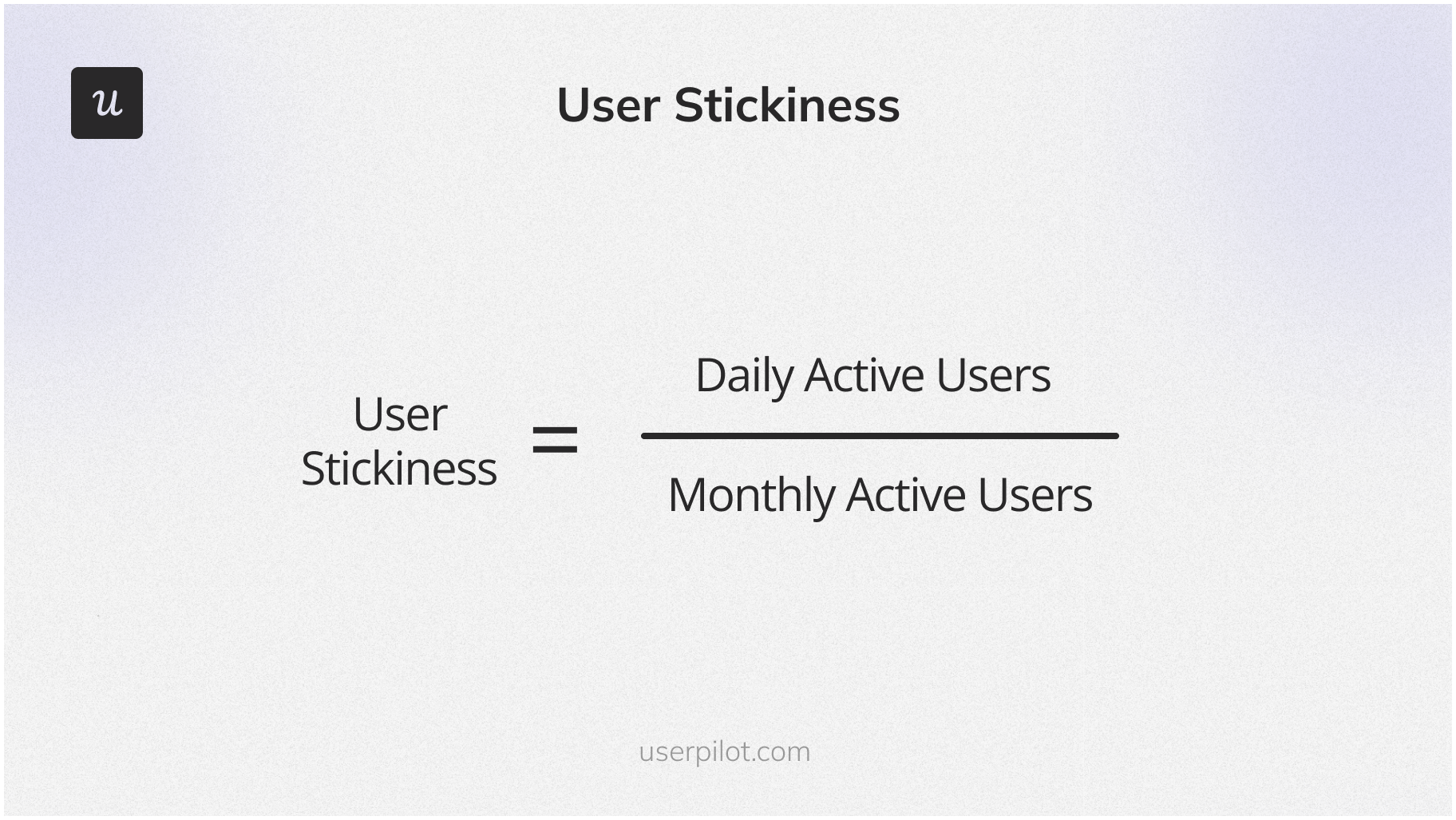
Measure user engagement
Start with product usage analytics.
Analyzing how users interact with your product is what product usage analytics is all about.
There’s a wide range of useful things you can learn from product usage analytics, including what is the most popular feature of your app, what issues your users face, how “sticky” a feature is, and a lot more.
Measuring different actions users take in your product will help you calculate a customer engagement score which tells you who your active users are.
There are different product analytics reports that you can use to analyze active user growth, like funnel analysis, path analysis, and trend analysis.
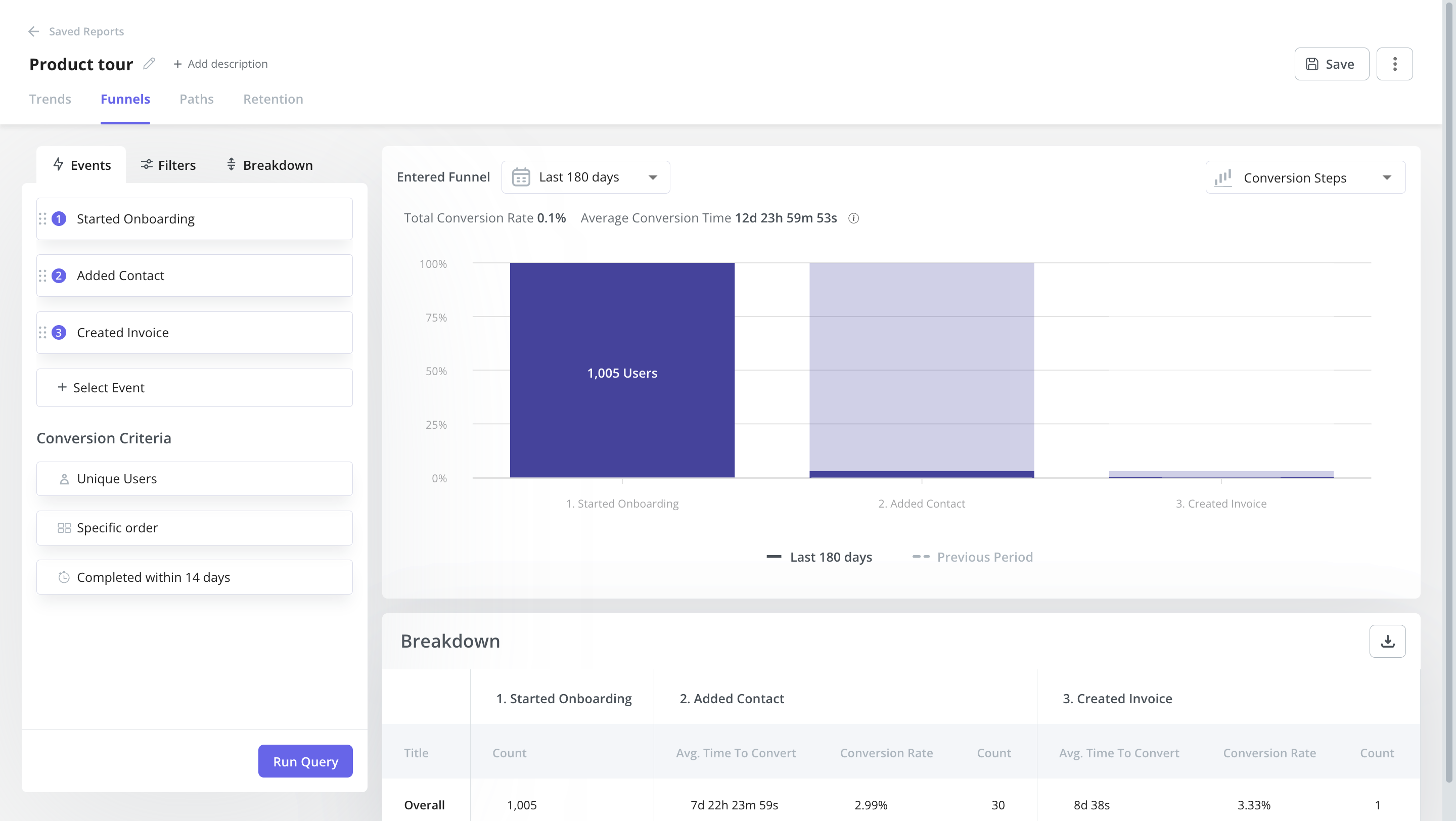
Measure user retention
User retention is a metric that indicates how many customers you keep vs lose in any given period of time
It may seem pretty straightforward to measure user retention. Even so, retention rates alone don’t tell the whole story. Gain a holistic view of your SaaS user retention by tracking the five key retention metrics:
- Customer churn rate
- Customer lifetime value (LTV)
- LTV to CAC ratio
- Net Promoter Score
- User retention rate
You can also track the user retention rate by analyzing cohort retention tables. They show how retention changes for different time periods and segments over time.

How to calculate daily active users?
As part of a regular check on the health of a product, many companies measure daily active users. These metrics let you know how quickly you attract new users and keep them coming back.
Depending on the platform and usage specification, active users may be defined differently. Be sure to define what type of engagement makes a user active for your SaaS business before starting the calculation.
For example, for a video-making platform, it may be the act of trying the video editor, for an email marketing platform it may be creating an email, and for a booking app, it may be creating an account.
In order to calculate daily active users, you must know the total number of unique users on any given day. Your app’s daily active users will be comprised of both the new and returning users.
If you only have monthly traffic/usage data, you can take the total number of unique visitors (users) and divide it by the days in the month. For example, if you have 3000 unique monthly sessions in February, divide it by 28 to get your average daily active users count.
If you use a tool like Userpilot, you don’t need to make any calculations. The daily active users (along with weekly and monthly active users) are displayed in visual dashboards, as seen in the image below.
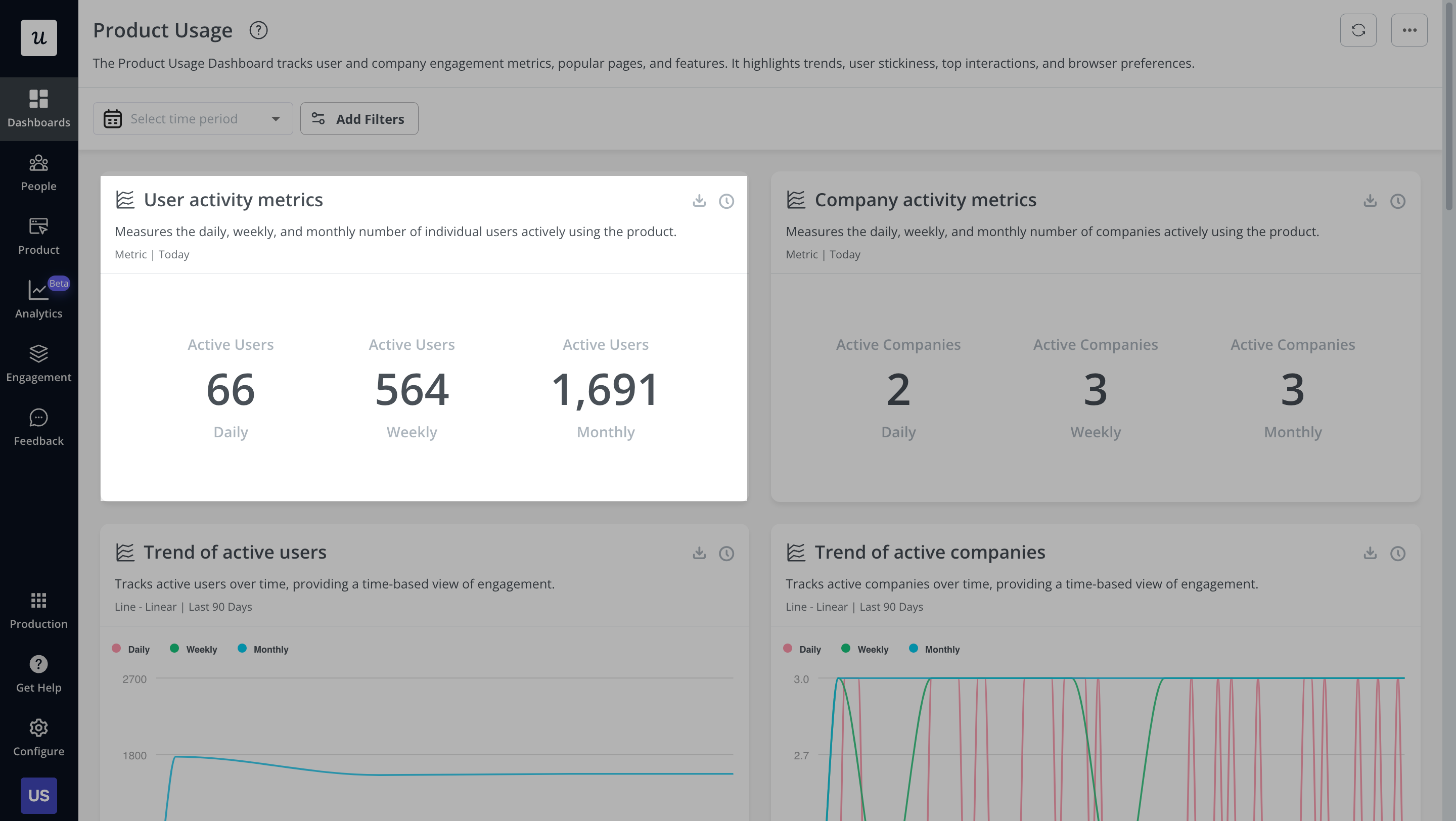
8 tactics for growing active users and increasing app engagement
Whether you’re looking to increase daily active users or engage inactive users, the following strategies will help you boost engagement and retention.
#1 – Personalize the onboarding experience for each user segment
To increase daily active users you can start by personalizing the onboarding experience, making sure the users discover the value of your product, fast.
The first thing you should do when a user signs up to try your product is welcome them. Use a welcome screen to:
- Welcome them
- Set the right expectations on what they can achieve with your product
- Learn relevant information about their role and job to be done so you can offer relevant guidance
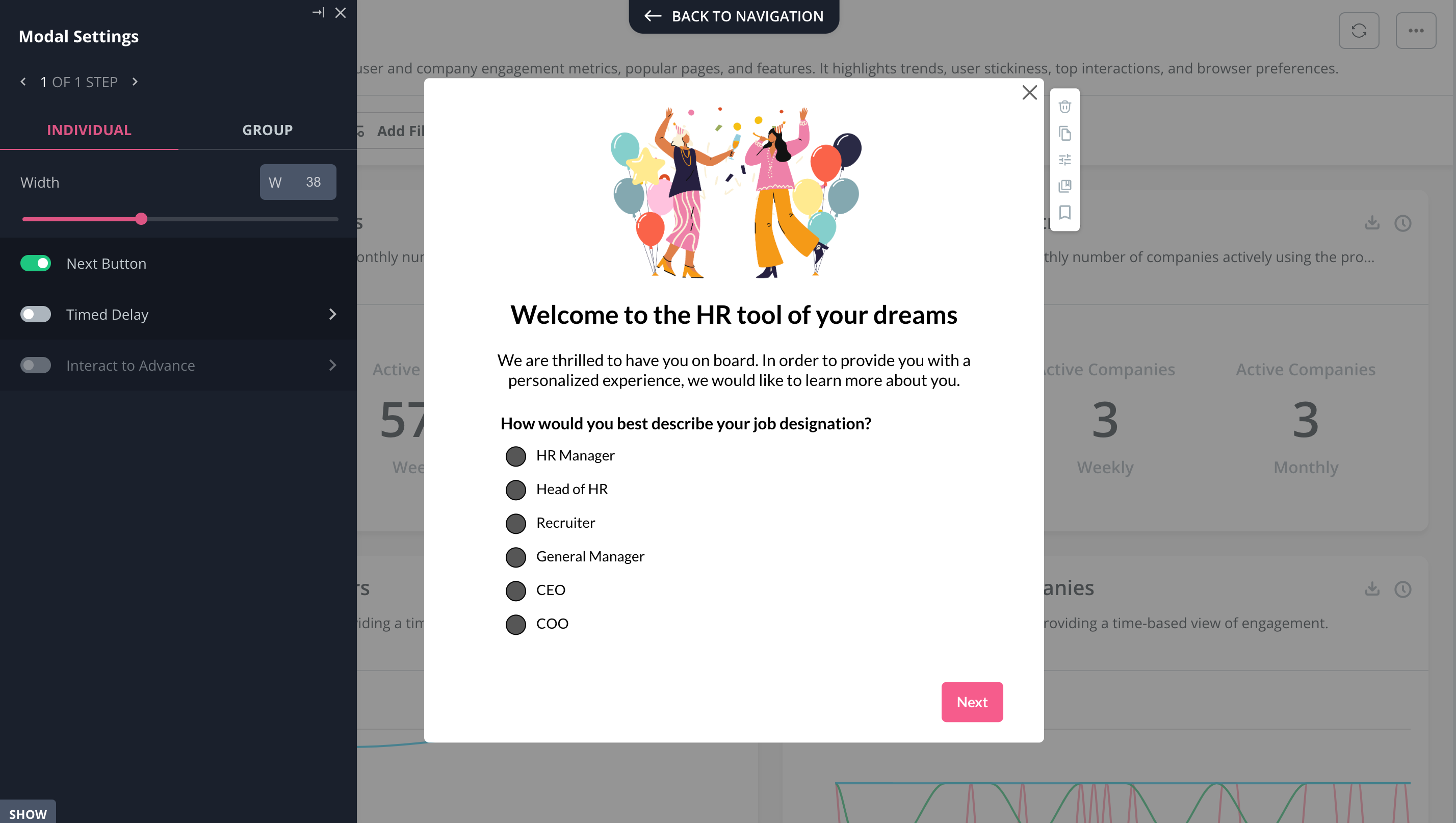
Once you collected the data, use segmentation to make the onboarding flow as relevant as possible for each use case. Your goal here is to get users to the activation point in the journey as fast as possible.
Create a separate checklist for each segment that drives users to engage with the key features of your app, relevant to them.
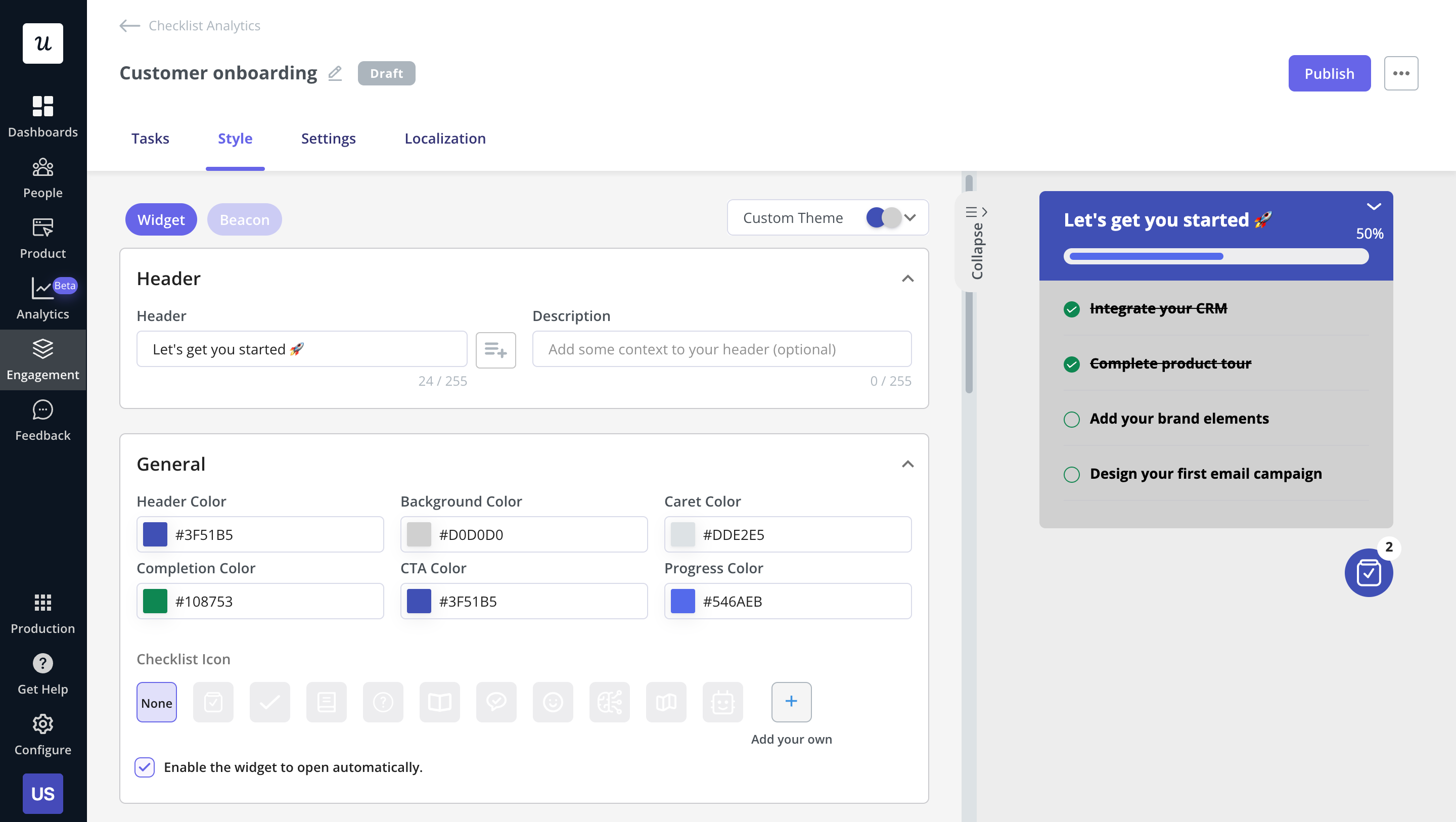
#2 – Send in-app messages to engage users
It is not a good idea to dump messages and push notifications directly into users’ faces. This will clutter the UI, and confuse and frustrate the users leading to a negative impact on engagement.
UI patterns used to communicate in apps (checklists, modals, tooltips, NPS surveys, etc.) are all examples of in-app messaging, but the success of your in-app marketing is determined by how relevant your messages are.
To maximize user engagement and increase monthly active users, you need to focus on contextual and timely in-app messaging:
- Make it relevant for specific personas and use cases
- Point them at the right time in the user journey
Use advanced targeting to achieve this.
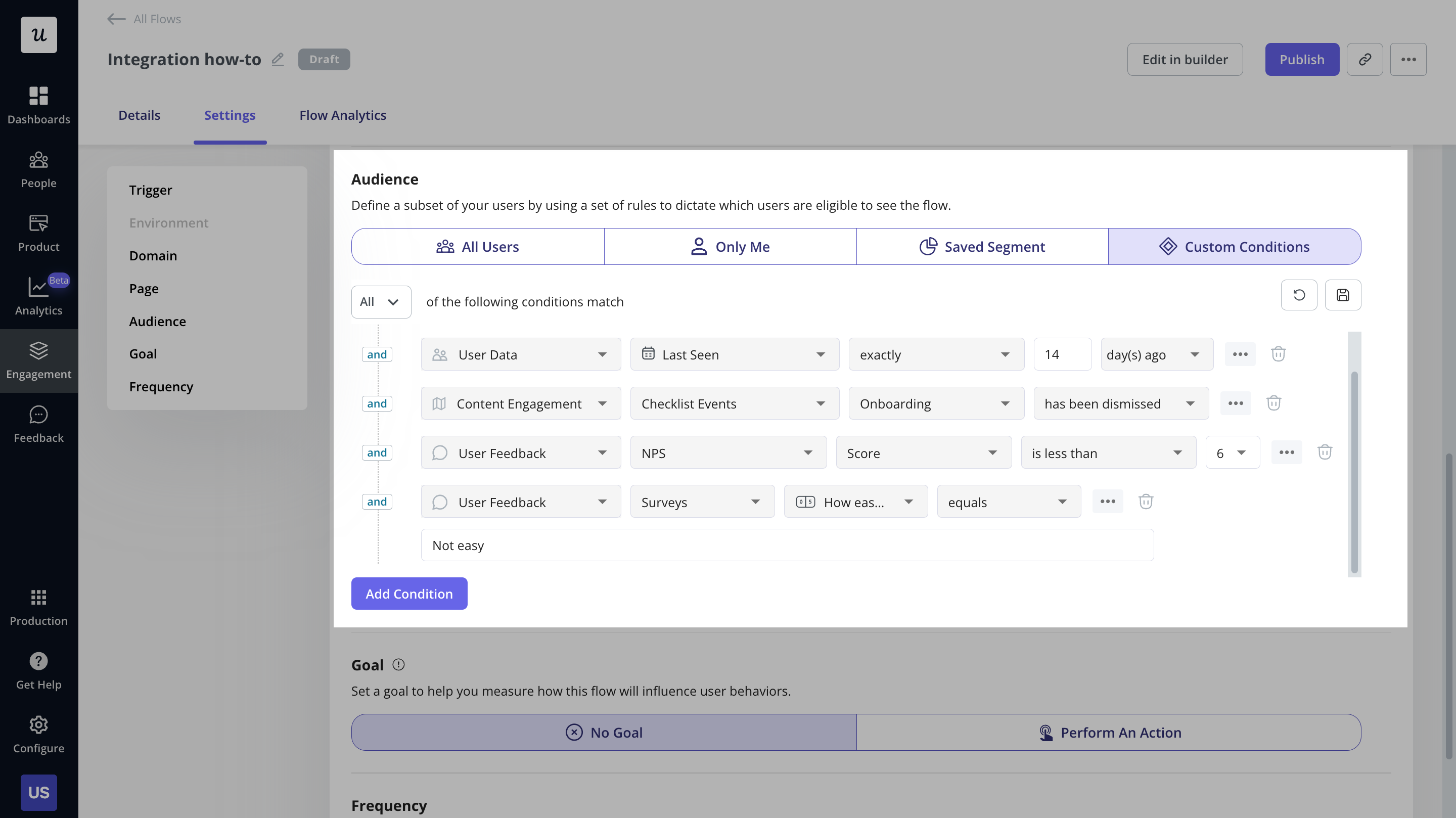
#3 – Expose users to new and relevant features for them
After being with you for a while, users stop reading your emails but still spend time in your app.
Launching new features via in-app announcements is a better method than emails.
You can use in-app modals to let users know what the new feature is, how it works, and invite them to use it.
You should not abuse full-screen modals that block the screen behind them, but you can use them if you just launched an important feature that is part of your product.
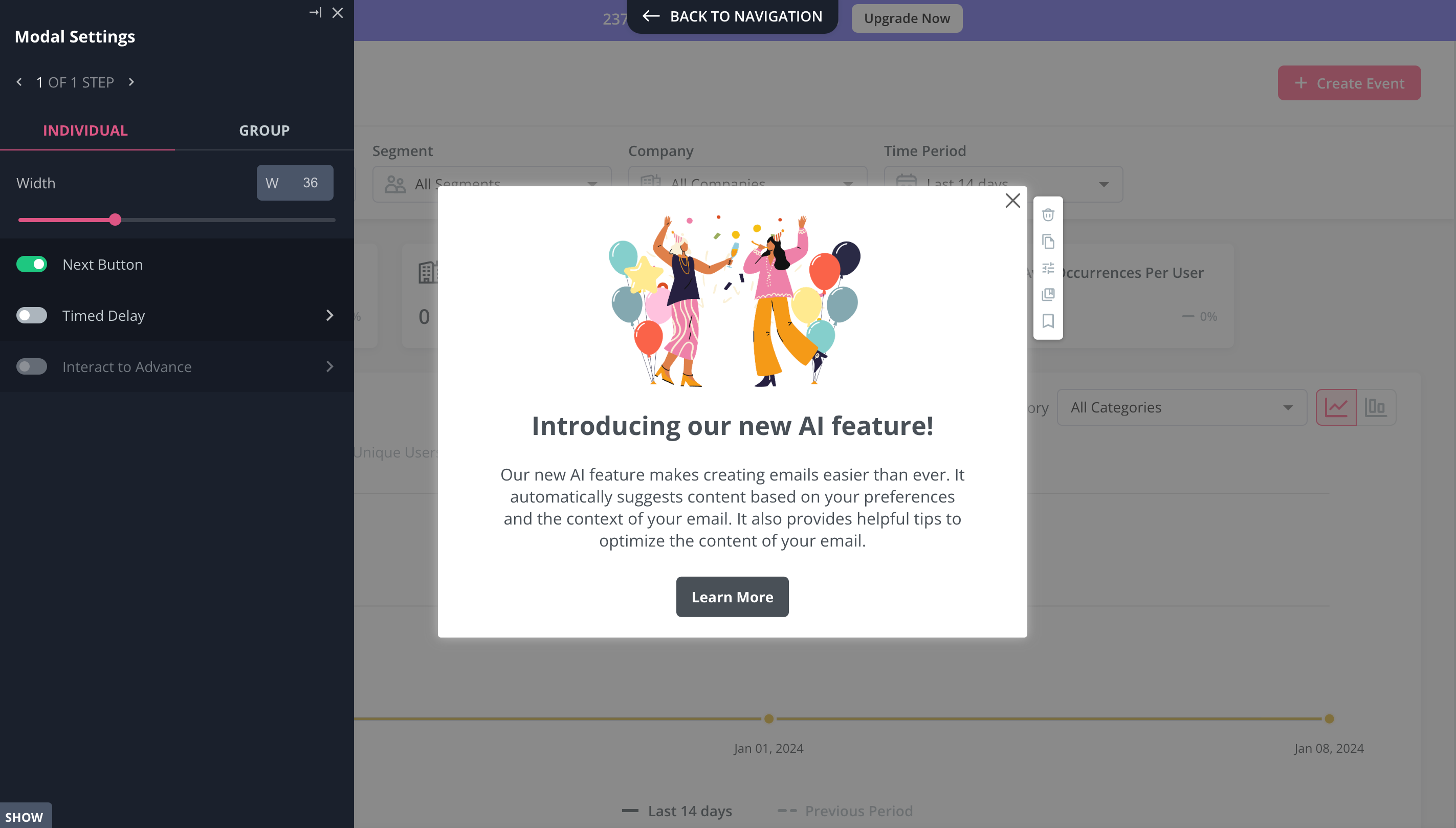
Consider something less intrusive, like a tooltip, when you are launching a secondary feature.
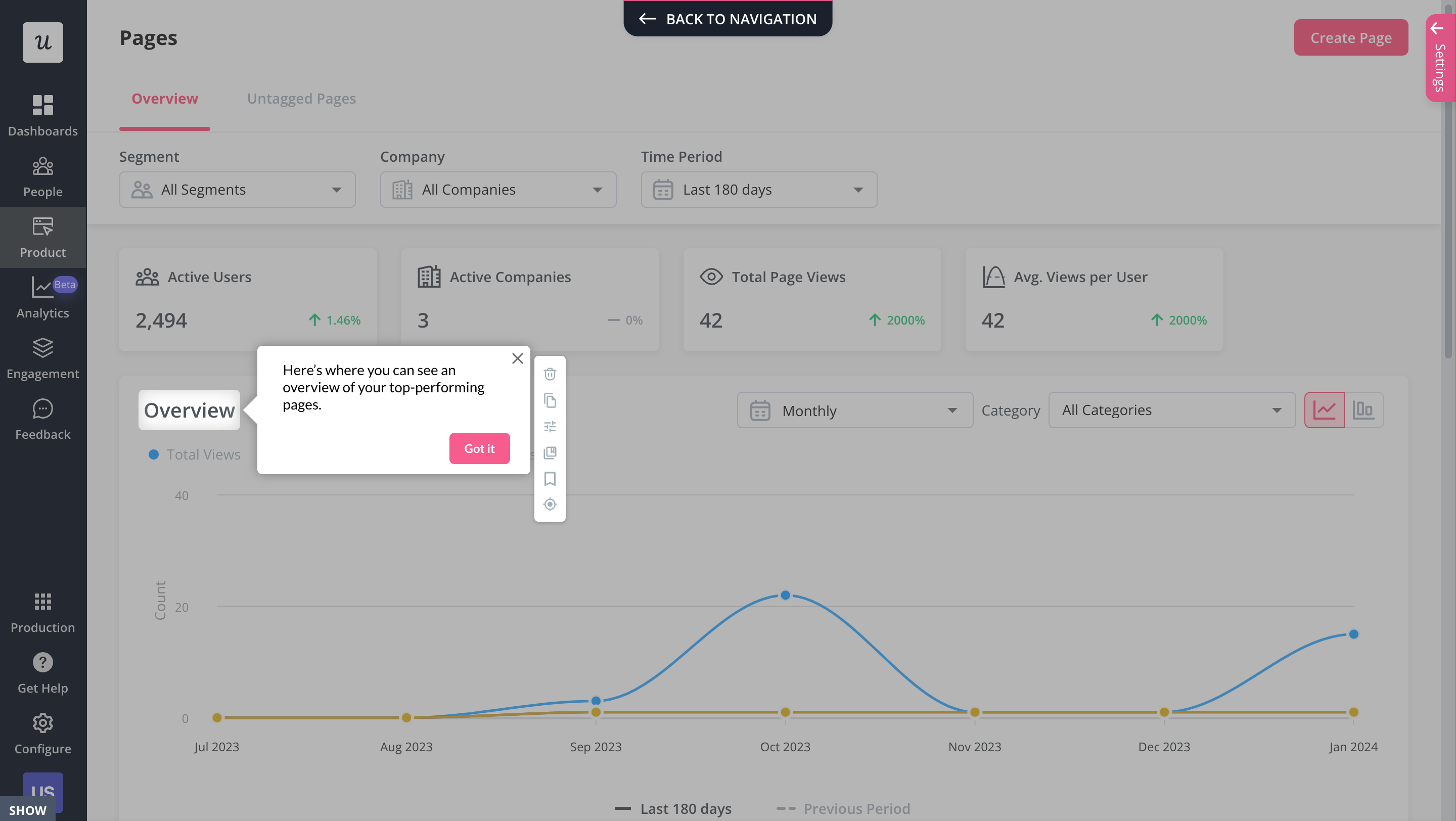
#4 – Grow active users and engagement with gamification strategies
Gamification can help turn the onboarding experience into a fun activity.
The human mind tends to focus more on uncompleted tasks when it sees some progress. The closer you are to the end the more you engage.
A simple example of using gamification strategies can be adding dummy tasks (tasks that were already completed) to your onboarding checklist we talked about earlier.
When the user sees completed tasks on the checklist, they are more inclined to engage.
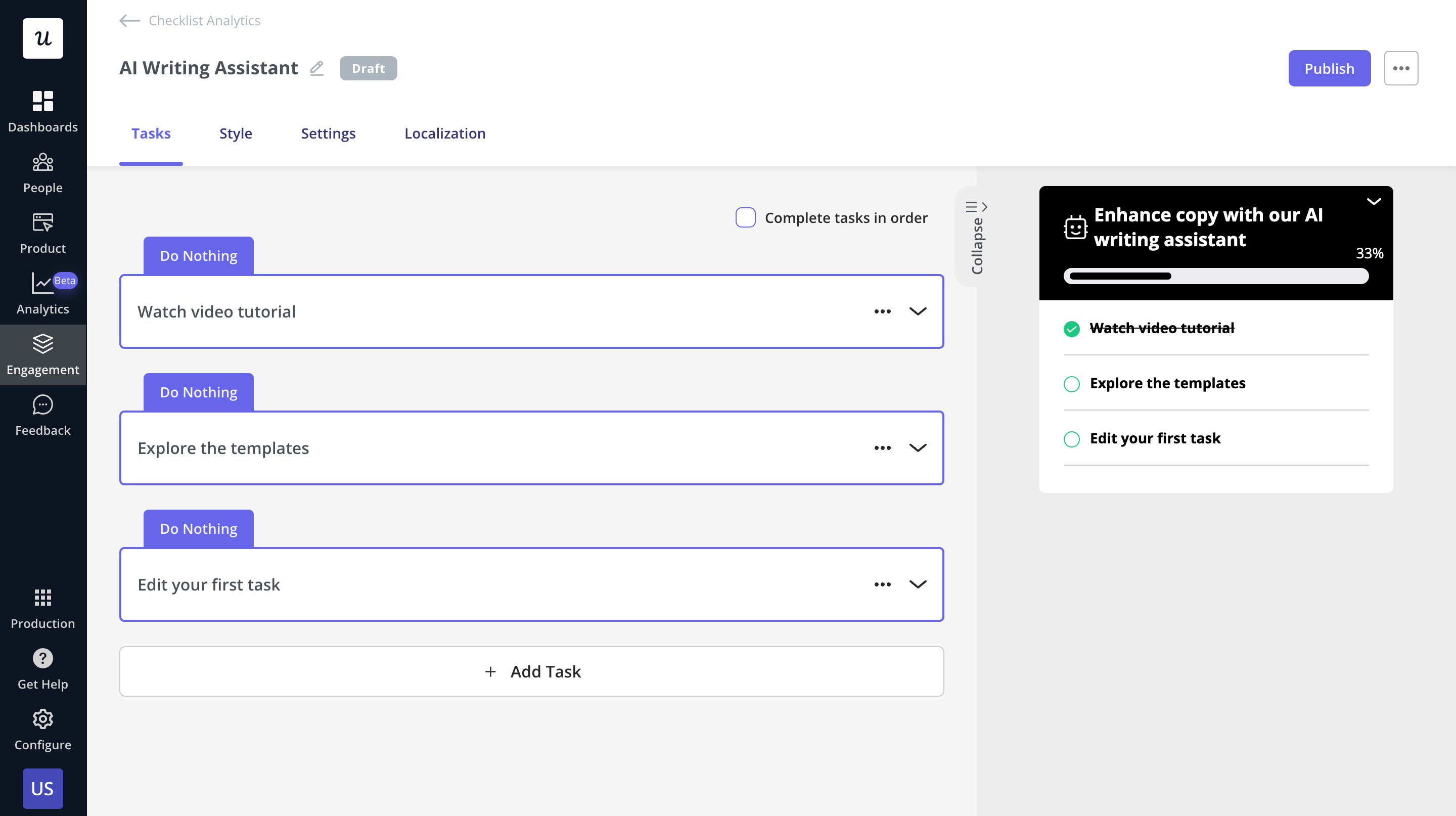
You can add dummy tasks with Userpilot simply by selecting the ‘do nothing’ box when adding a new task to a checklist.

#5 – Trigger emails based on in-app behavior and bring users back inside the app
Let’s face it. If users can’t find any value from your app, they are not going to stay there. This means that you need to stay in touch with them on other channels too, and give them enough reasons to engage with your app again.
Focus on creating insightful personalized email copies that showcase specific benefits for each use case. This will give users a compelling reason to engage with your product again.
Some other examples of behavioral emails that you can send include:
- Welcome emails: They are one of the best ways to introduce your app and build a connection between your brand and the user.
- One-off emails: If you want to offer a more detailed presentation of a new feature without in-app interruptions, this kind of email is the best way.
- Educational emails: Teach your users about the values your app gives and the benefits it offers. Over time, this can help customers get the most out of your app and it will foster habitual use.
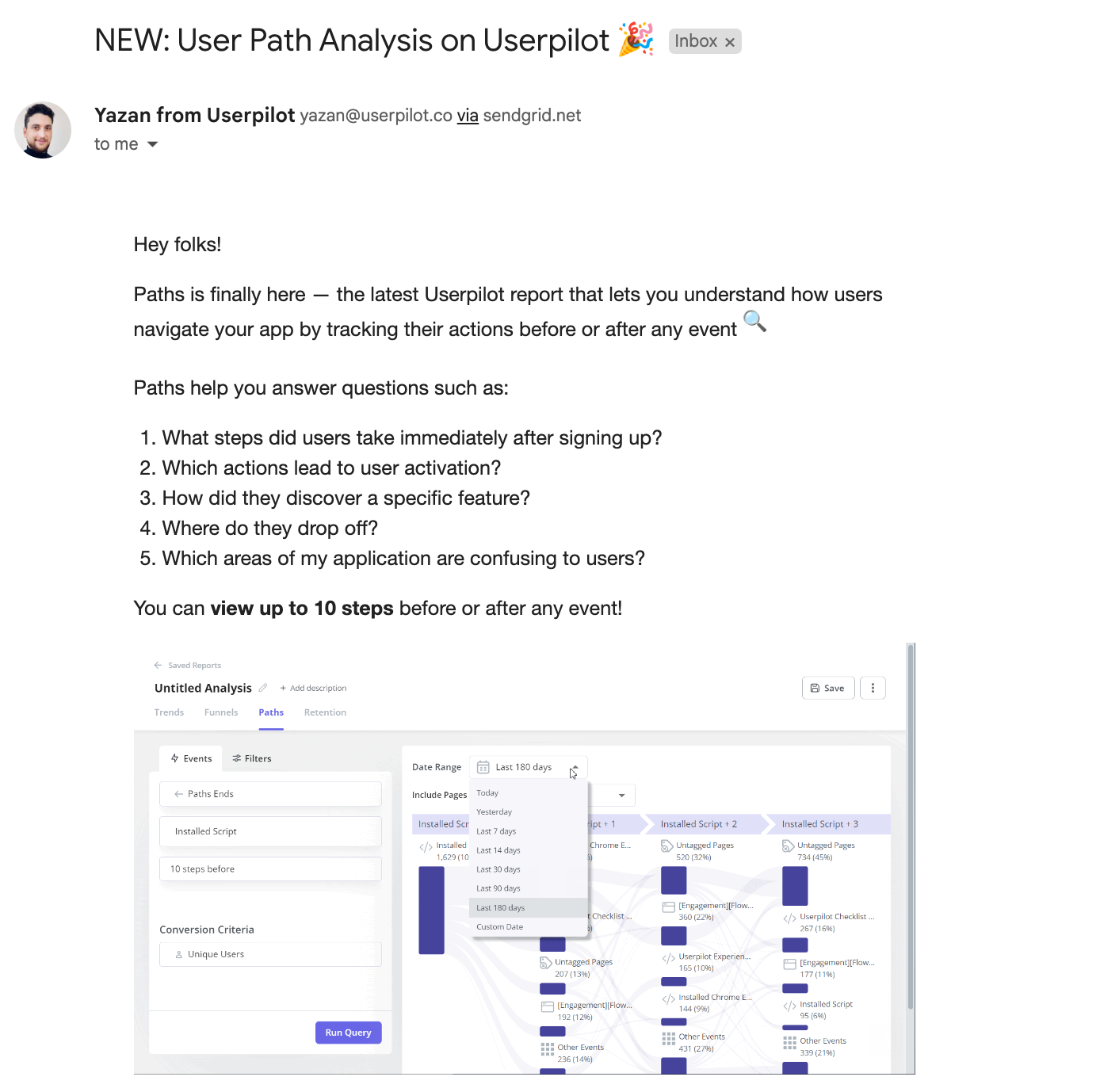
#6 – Collect and act on feedback
Use customer satisfaction surveys to assess how easy it is for users to use the feature and gauge overall experience. This helps you identify what’s driving value in the product and what’s causing friction.
Acting on these insights will drive more user engagement and grow your active users. In-app micro surveys will help you get more in-depth, qualitative feedback on specific aspects of a feature.
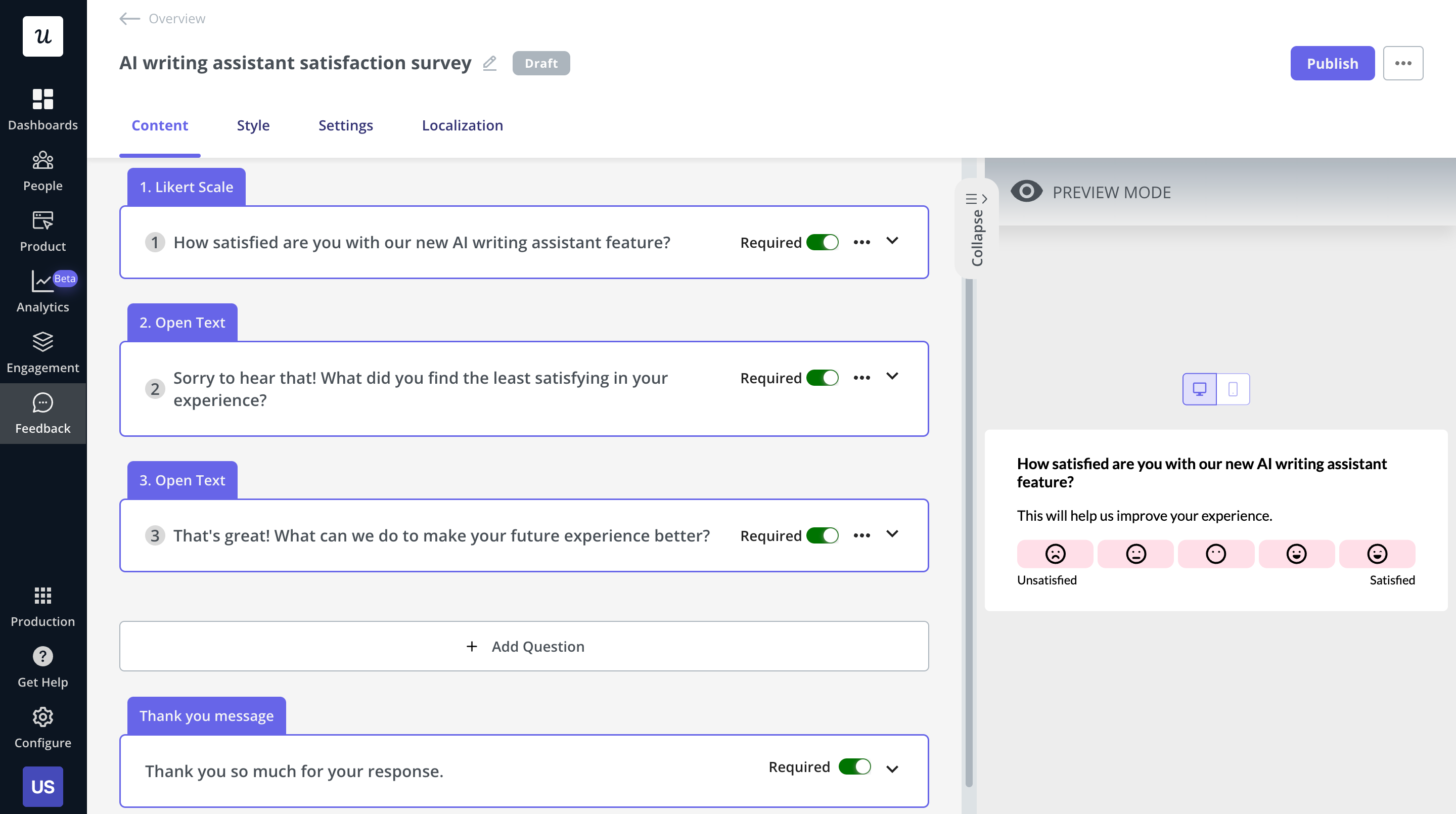
In-app feature feedback collected with a microsurvey, built with Userpilot. Get a demo and see how you can do it too!
#7 – Remove features that users aren’t finding valuable
Some of the features on your platform may not be beneficial to your users. Getting rid of features that don’t add value is an effective way to improve your product and focus your app development on features that users actually want and need.
Here’s how you can do it:
- Make sure your initial research is extensive enough, and that the new feature adds value to the user experience.
- Avoid building new features that might serve as an alternative, complementary product to what your users like.
- Have a bigger picture of what your users actually want. Avoid building features for one customer.
#8 – Analyze the behavior of active users and replicate it for others
In order to increase engagement, you need to zoom in on what your active users are doing inside the app. The purpose behind doing so is to replicate it for other users to put them on the path towards success.
Here’s how to do it: segment your users to find your most successful customers. Look at their individual behavior in detail – Userpilot’s user profiles feature works wonders here. Find common similarities between these active users and then replicate their actions for other users.
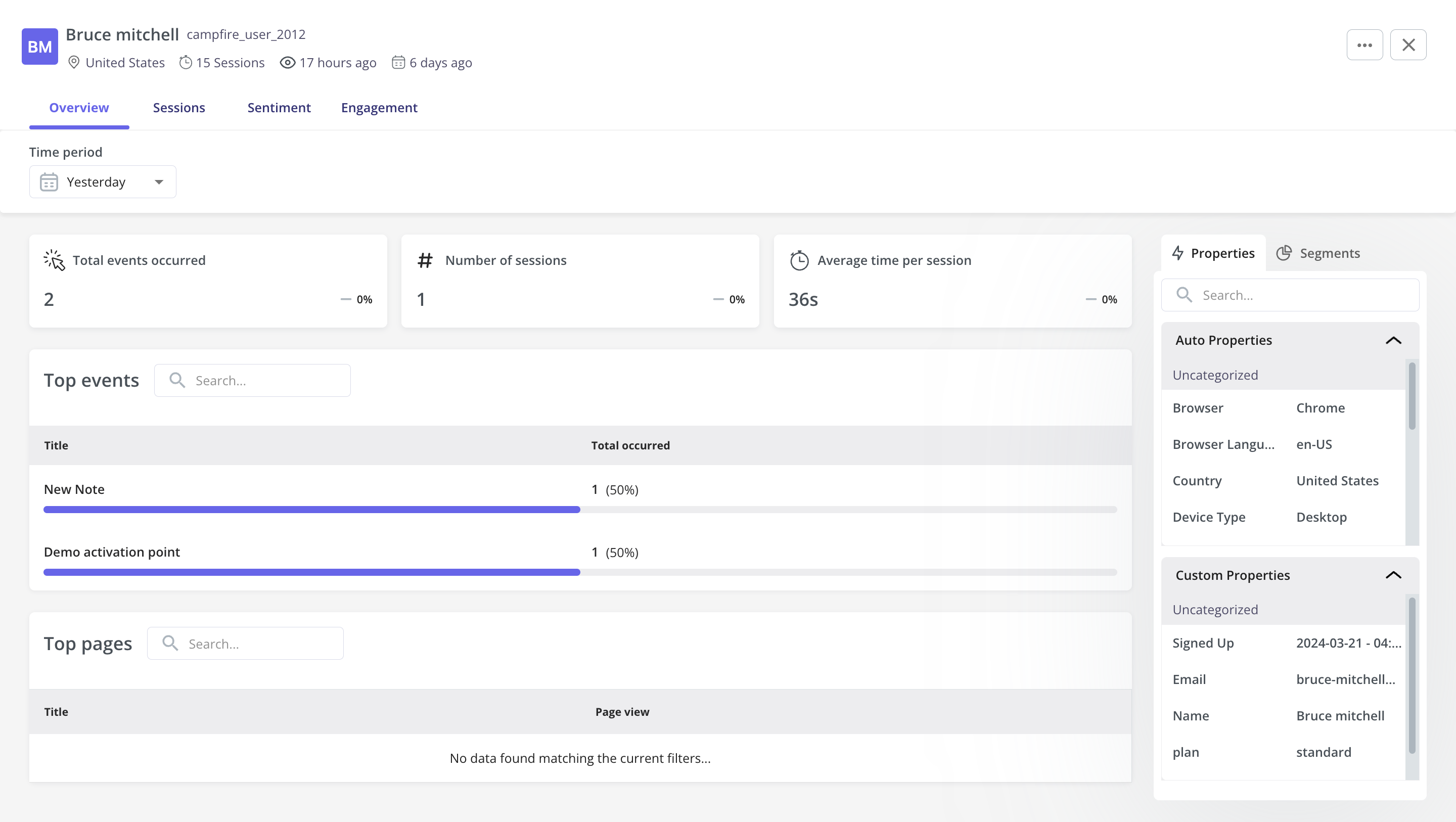
Conclusion
Growing active users constantly is one of the best things you can do to ensure the progress of your app. If your app continues to engage users and provides them with value, they will continue to pay for it.
- Understand who are the daily active users of your app.
- Learn how to measure them.
- Use the metrics to your advantage.
Want to get started with growing users in your SaaS company? Get a Userpilot Demo and see how you can benefit from doing it the right way.








